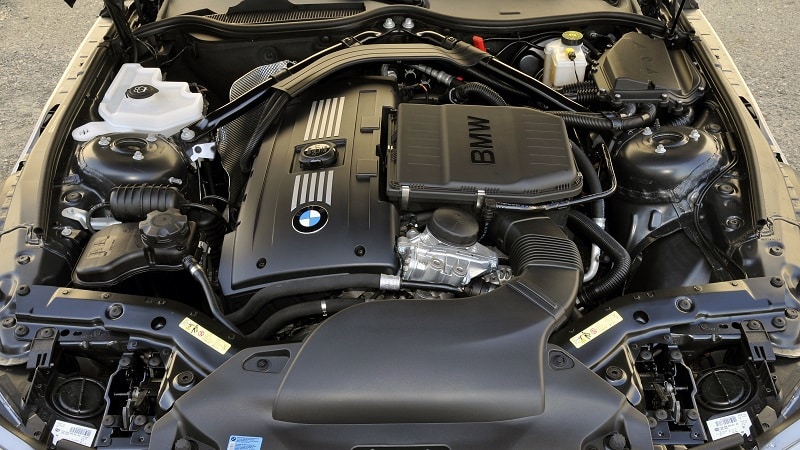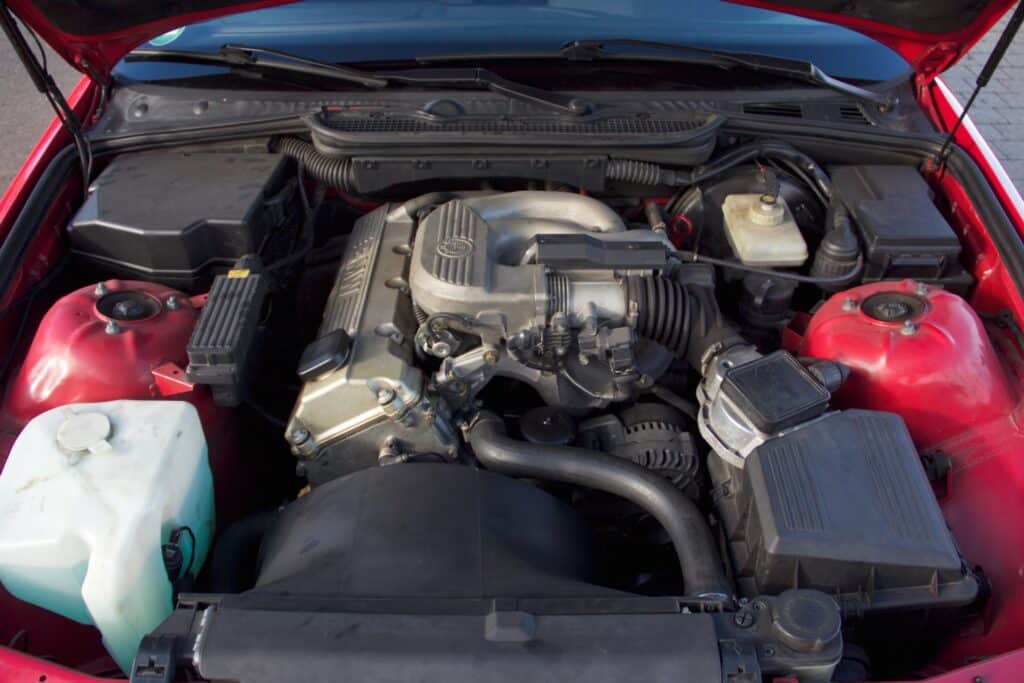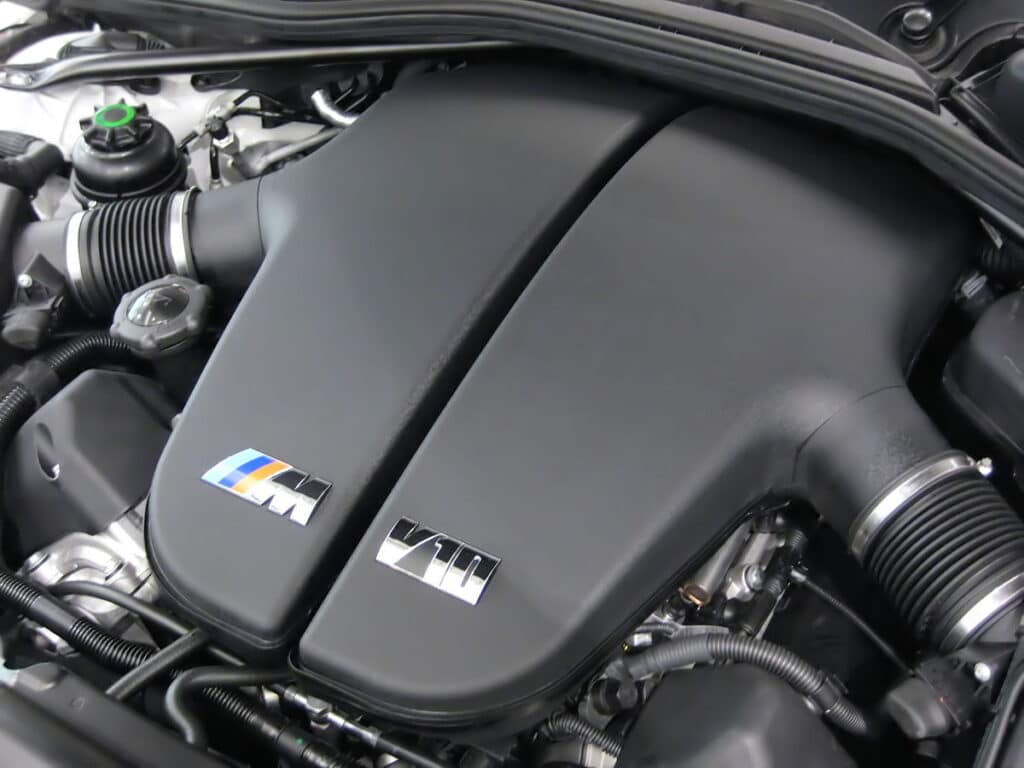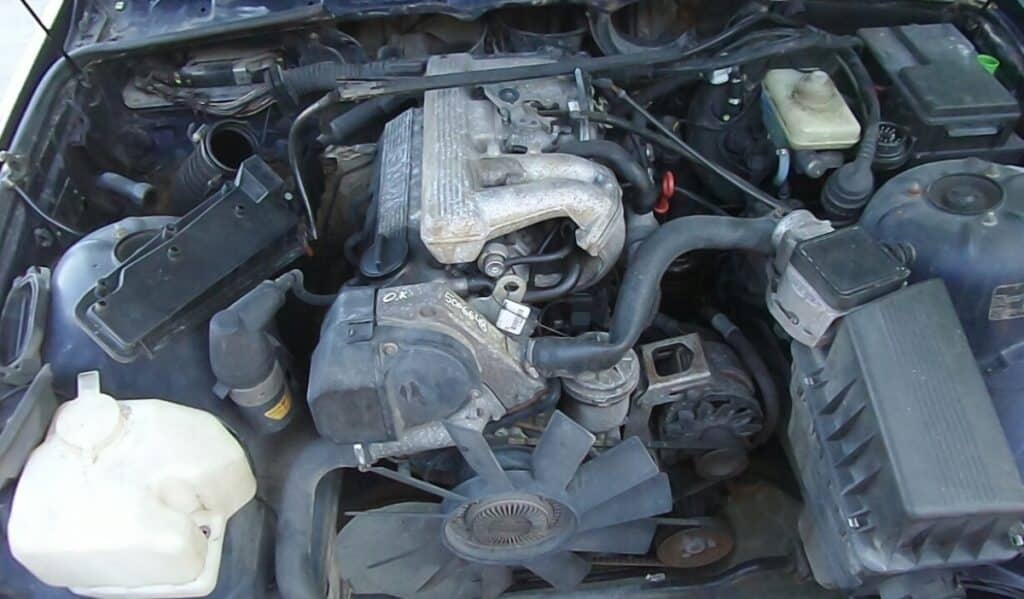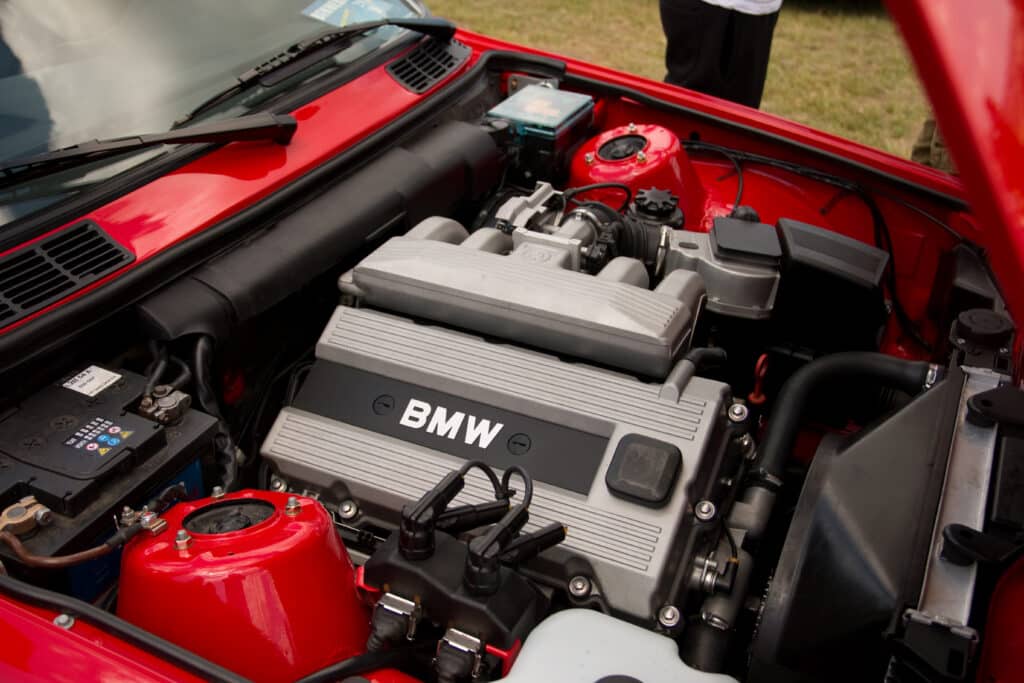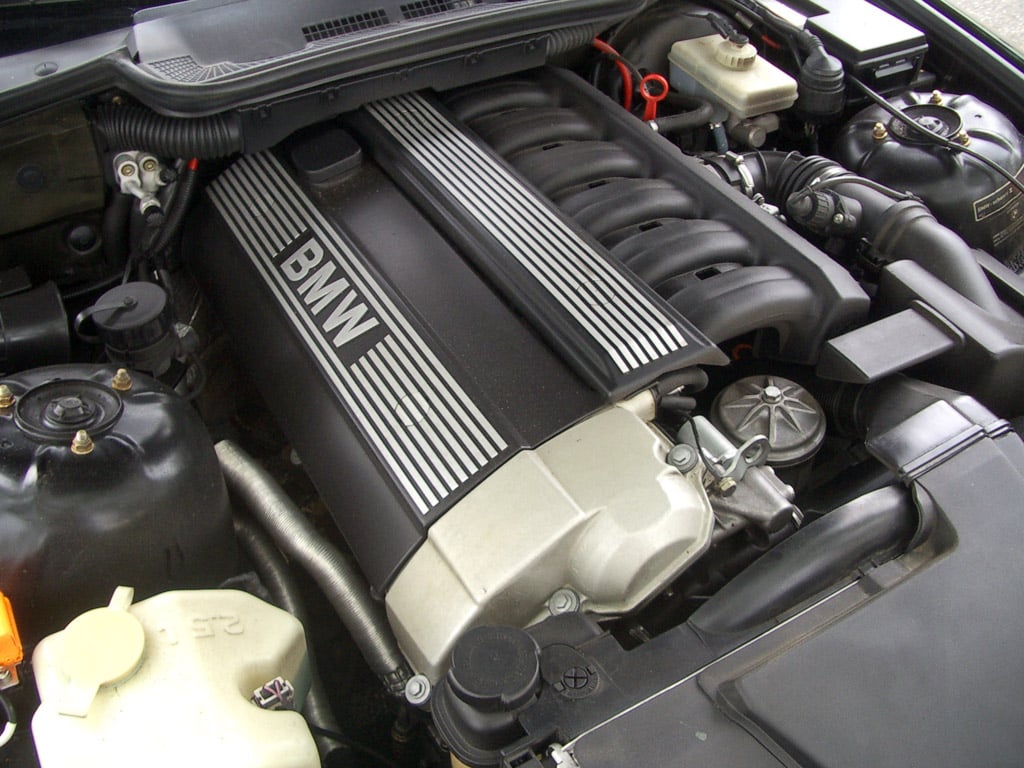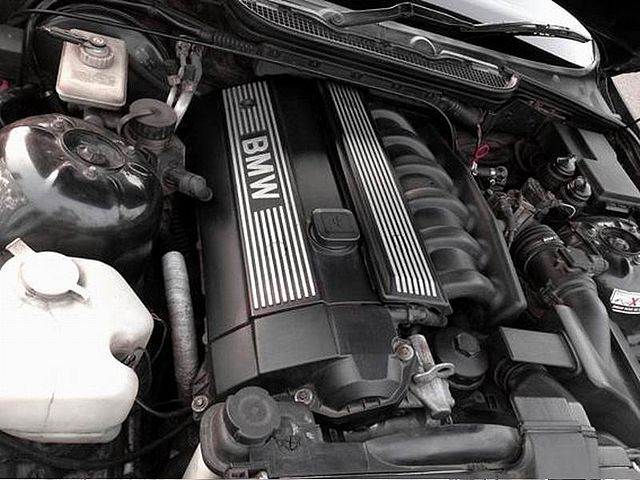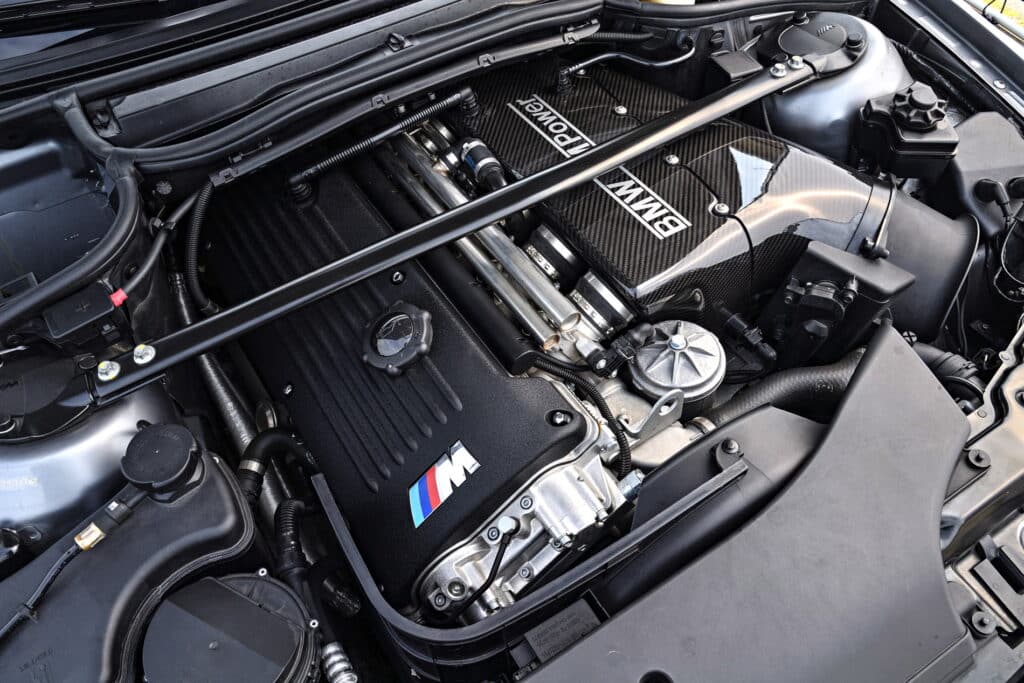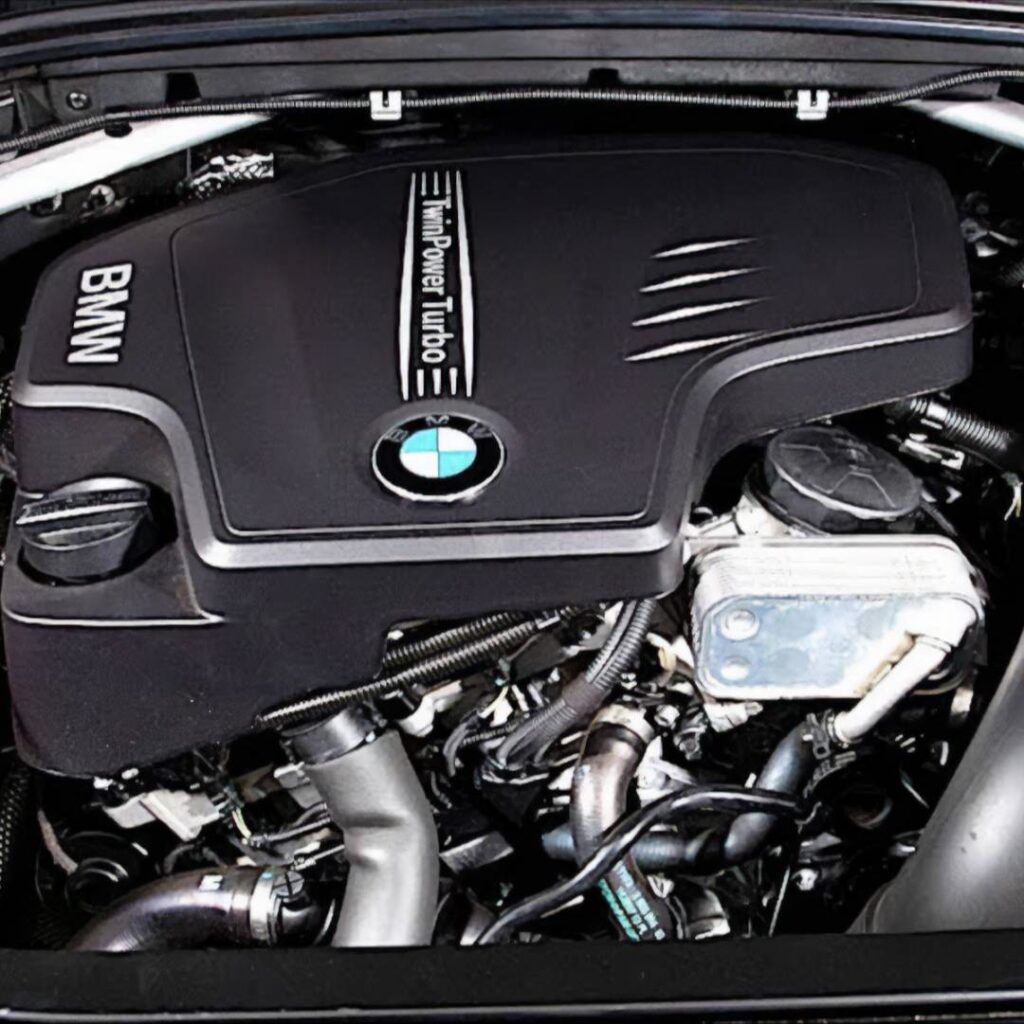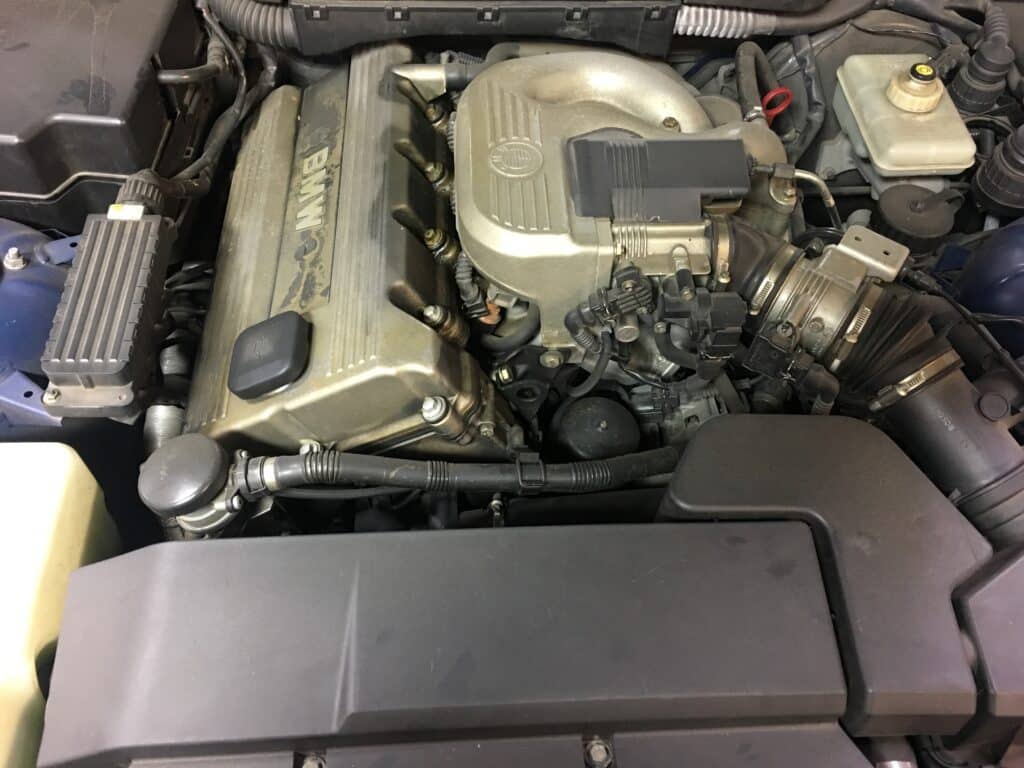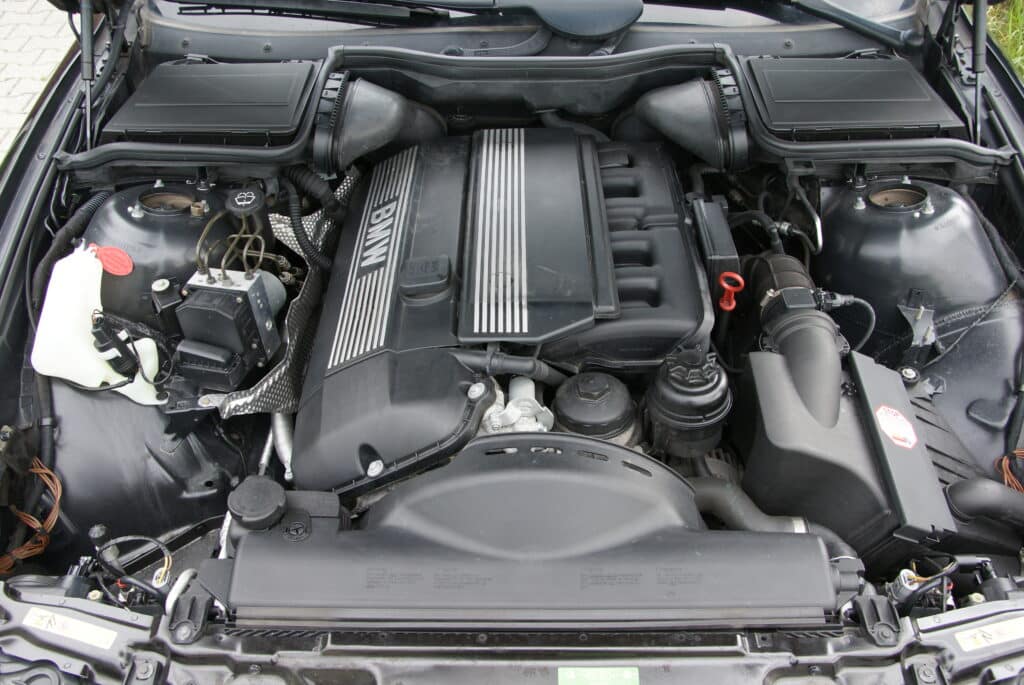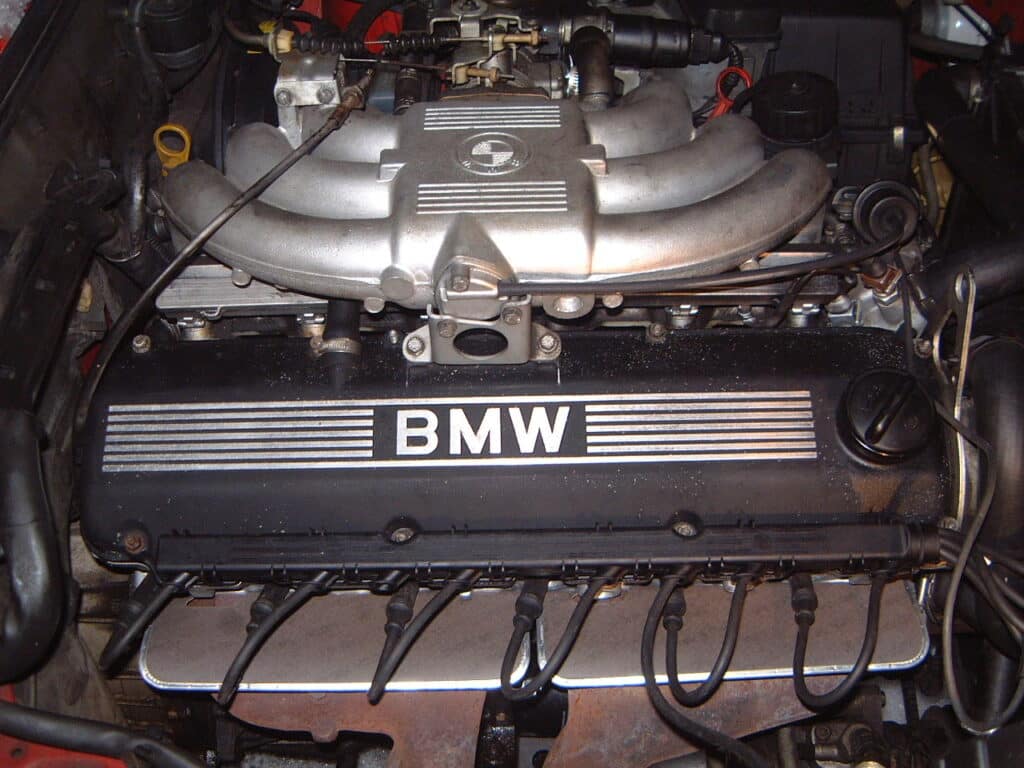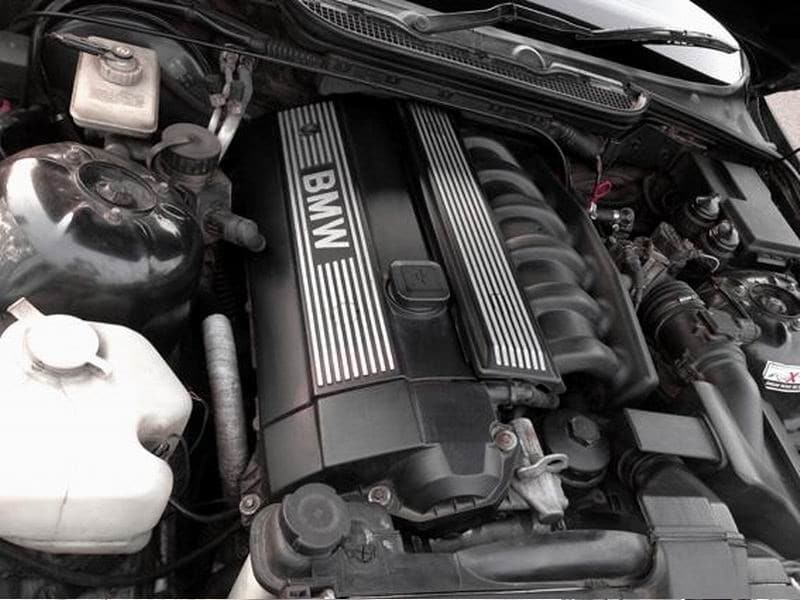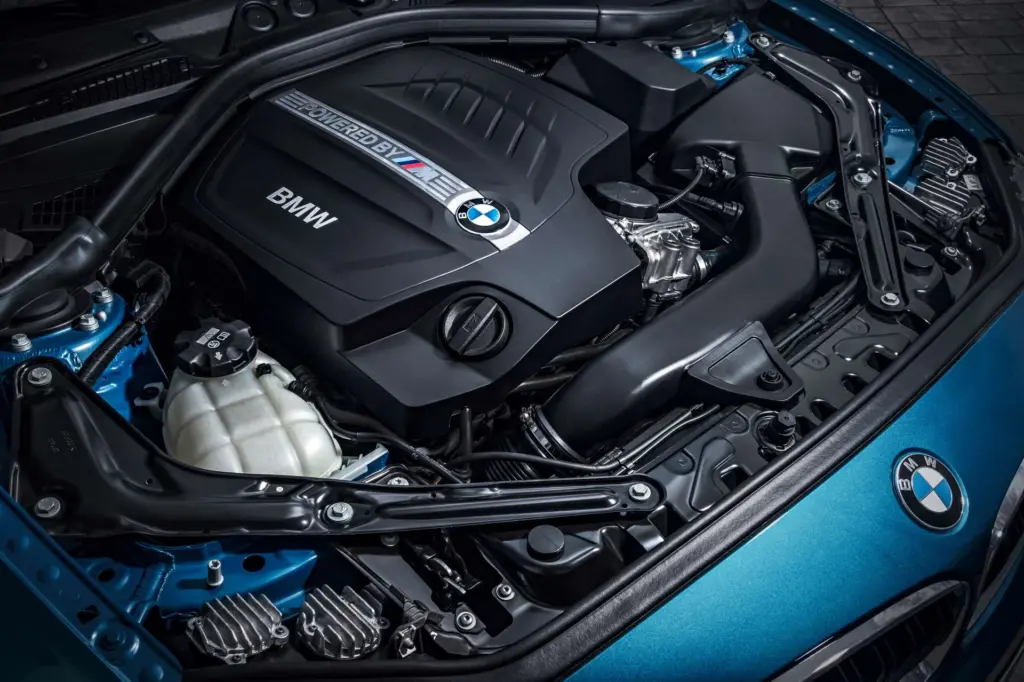The BMW S52B32 is a paragon of German engineering, a high-performance 3.2-liter inline-6 engine that powered some of the most celebrated models of the late 90s, notably the E36 M3 and the Z3 M Roadster/Coupe in North America. Renowned for its robust power delivery and sonorous exhaust note, the S52B32 is a naturally aspirated powerhouse, a masterpiece of its era that blends performance with the reliability expected from BMW.
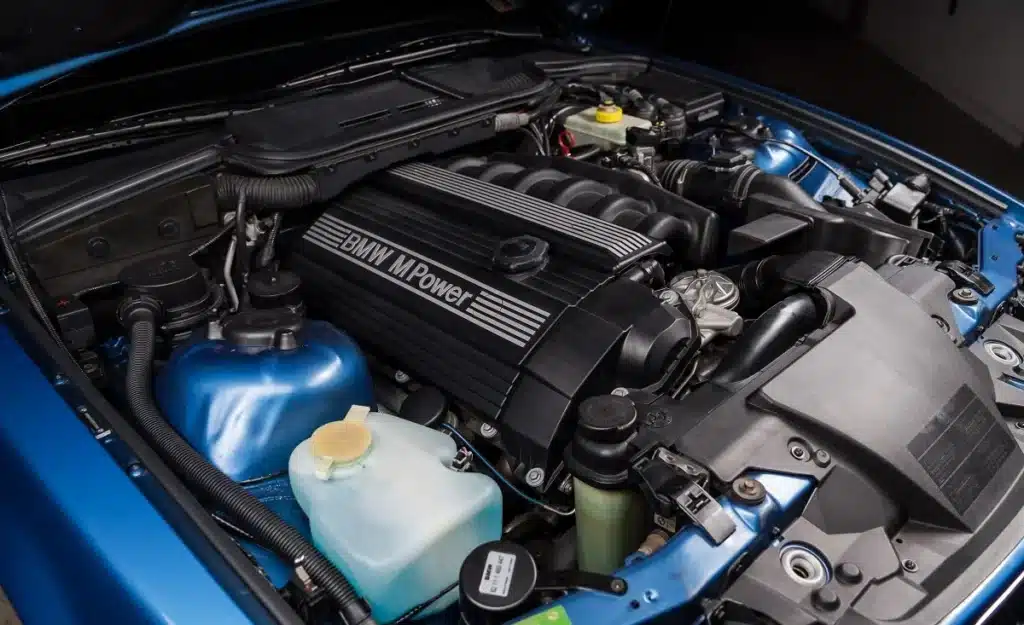
With its dual overhead camshaft (DOHC) design, it utilizes 24 valves to optimize airflow and features BMW’s VANOS system, which adjusts the timing of the valves to enhance torque, efficiency, and engine responsiveness.
BMW’s S-Series engines are the heartbeats of their M division, symbolizing the pinnacle of performance in BMW’s lineup. The S52B32, in particular, is part of a lineage that has long been synonymous with precision and power, continuing BMW’s legacy of creating engines that are as thrilling to drive as they are technologically advanced.
The S-Series engines have set the benchmark for performance in consumer vehicles and showcased BMW’s prowess in motor racing. The S52B32 carries this legacy forward, representing a period in BMW’s history where the focus on driving pleasure and mechanical purity was paramount.
Its impact has been such that it remains a sought-after engine for enthusiasts and tuners, a testament to its enduring design and the unceasing allure of BMW’s S-Series engines.
BMW M3 E36 Sound
BMW S52B32 Engine Specs
The BMW S52B32 is an engine that excels in delivering raw performance and its meticulously crafted technical specifications.
| Manufacturer | Munich Plant |
|---|---|
| Production years | 1995-2000 |
| Configuration | Inline-6 |
| Cylinder block alloy | Cast iron |
| Fuel system | Injector |
| Number of cylinders | 6 |
| Valves per cylinder | 4 |
| Piston stroke, mm | 89.6 |
| Cylinder bore, mm | 86.4 |
| Compression ratio | 10.5 |
| Displacement, cc | 3152 |
| Power output, hp | 240 /6000 rpm |
| Torque output, Nm / rpm | 320 /3800 rpm |
| Max engine speed, rpm | 6500 |
| Fuel type | Petrol |
| Euro standards | Euro 2 |
| Weight, kg | 141 |
| Fuel consumption, L/100 km (for E36 M3) | City – 16.1, Highway – 10.1, Combined – 13.3 |
| Oil consumption, gr/1000 km | Up to 1000 |
| Recommended engine oil | 0W-30 / 0W-40 / 5W-30 / 5W-40 / 10W-40 / 15W-40 |
| Engine oil capacity, liter | 5.5 |
| Normal engine operating temperature, °C | ~90 |
| Engine lifespan, km | ~400,000 |
| Transmission | 5MT / 5AT ZF Type C ZF 5HP18 |
| Gear ratios, 5MT | Torque output, Nm/rpm |
| Gear ratios, 5AT | 1 – 3.67, 2 – 2.00, 3 – 1.41, 4 – 1.00, 5 – 0.74 |
| Final drive ratio, 5MT | 3.23 |
| Final drive ratio, 5AT | 3.38 |
The S52B32 engine is a marvel of precision engineering, boasting a displacement of 3.2 liters. It operates on a naturally aspirated induction system with a straight-six configuration emphasizing balance and smoothness.
The engine features BMW’s signature double-VANOS (Variable Nockenwellen Steuerung) system, which dynamically adjusts both the intake and exhaust camshaft timing to optimize power delivery and efficiency across the rev range.
These technical attributes are the backbone behind the S52B32’s performance, granting it the capability to perform on both the street and the track with remarkable efficiency and response.
Performance Metrics
Performance metrics for the S52B32 are a testimony to BMW’s engineering prowess. The engine’s responsiveness and agility are products of its high-revving nature and BMW’s VANOS technology, which affords it a wide power band.
It’s not just about peak figures; the S52B32 delivers power smoothly and progressively, translating to a responsive and engaging driving experience.
Horsepower and Torque Outputs
When it comes to power, the S52B32 engine is no slouch. It was designed to provide a thrilling rush of acceleration, and that’s precisely what it delivers. With a horsepower rating that allows it to compete with the best in its class and a torque curve that ensures ample pulling power, this engine is all about performance.
Here are the horsepower and torque outputs:
| Output | Detail |
|---|---|
| Max Power | 240 HP @ 6,000 RPM |
| Max Torque | 236 lb-ft @ 3,800 RPM |
These figures indicate the engine’s ability to provide a surge of power when needed while also being tractable in lower rev ranges for day-to-day drivability.
The peak horsepower is achieved just below the redline, encouraging drivers to explore the upper echelons of the rev range, while the peak torque is accessible from relatively low RPMs, making it flexible in various driving conditions.
In essence, the S52B32 isn’t solely defined by its impressive statistics; how it attains them is equally remarkable. Its specifications mirror an engine meticulously fine-tuned to provide an immersive driving encounter, prioritizing the delivery of power that’s not only readily available but also exhilarating.
The seamless fusion of high-revving exhilaration and low-end strength establishes the S52B32 as a standout addition to BMW’s illustrious history of high-performance engines.
Engine Design and Construction
The BMW S52B32 is not just an engine; it’s a statement of craftsmanship and forward-thinking engineering. The design and construction of the engine are a testament to BMW’s dedication to performance and durability.
The S52B32 engine features a robust cast iron block, chosen for its unparalleled strength and ability to withstand high-stress levels and heat. This durability is crucial for an engine designed to deliver high performance consistently. Topping the iron block is an aluminum alloy head, which offers the dual benefits of lightweight construction and excellent thermal conductivity, aiding in heat dissipation.
The valvetrain of the S52B32 is a study in precision engineering. It employs a dual overhead camshaft (DOHC) layout with four valves per cylinder, resulting in a total of 24 valves. This configuration allows optimal airflow into and out of the combustion chamber, improving efficiency and power.
The engine also benefits from BMW’s VANOS system, which adjusts valve timing on the fly to enhance performance at different engine speeds.
Innovative Features and Technologies
BMW’s approach to innovation is embodied in the S52B32’s advanced features:
- Double-VANOS: BMW’s proprietary variable valve timing system adjusts the timing of both the intake and exhaust camshafts, optimizing engine breathing across the rev range and improving fuel efficiency.
- Sequential Multi-Port Fuel Injection: This technology ensures precise fuel delivery, optimizing combustion for maximum power and efficiency while reducing emissions.
- Siemens MSS50 Engine Management: A sophisticated engine control unit (ECU) that manages various parameters, from fuel injection to VANOS valve timing, ensuring the engine operates optimally under all conditions.
These features coalesce to form an engine that not only delivers exhilarating performance but does so with the reliability and efficiency that BMW engines are known for. The S52B32’s design and construction clearly reflect BMW’s ethos of ‘Sheer Driving Pleasure’, offering a blend of power, refinement, and technological sophistication.
BMW S52B32 Engine Reliability
The BMW S52B32 engine is heralded for its robustness and endurance, but like any high-performance powertrain, its longevity and durability are contingent upon proper care and periodic maintenance.
Longevity and Durability
Constructed with a cast iron block and an aluminum alloy head, the S52B32 is built to last. The strength of the materials used provides a solid foundation for high durability, enabling the engine to withstand the rigors of both daily driving and the demands of performance enthusiasts.
It’s not uncommon for these engines, when properly maintained, to surpass the 200,000-mile mark without major issues.
Common Issues and Solutions
Despite its well-earned reputation for reliability, the S52B32 engine is not without its common issues. Over time, owners have reported several recurring problems:
- VANOS System Failure: The VANOS system can be prone to wear, leading to loss of power and rough idling. Regular inspections and timely replacement of VANOS seals can mitigate this issue.
- Cooling System Weaknesses: The engine’s cooling system may fail, particularly the water pump and thermostat. Upgrading to a higher-quality water pump and regularly changing the coolant can prevent overheating.
- Sensor Malfunctions: Oxygen and camshaft position sensors can fail, impacting the engine’s performance. Replacing sensors as part of routine maintenance can avoid larger problems.
Maintenance Tips for Long-Term Reliability
Maintaining the S52B32 for longevity involves several key practices:
- Regular Oil Changes: Use high-quality synthetic oil and change it according to BMW’s recommended intervals.
- Coolant System Care: Monitor the coolant system and replace old hoses, radiators, and water pumps before failure.
- VANOS Maintenance: Check the VANOS unit during major services and replace seals as needed.
- Timely Replacement of Wear Items: Spark plugs, ignition coils, and filters should be replaced at recommended intervals to maintain optimal engine health.
Adhering to a strict maintenance regimen is the best way to ensure the S52B32 engine operates reliably over the long term. For BMW enthusiasts, investing the time and resources into regular upkeep is not just maintenance; it’s a passion.
BMW S52B32 Engine Problems
The BMW S52B32 engine, while celebrated for its performance, is also known for certain mechanical issues that can arise over time. Understanding these problems, troubleshooting them effectively, and taking preventative measures can greatly enhance the engine’s lifespan and reliability.
Several mechanical issues have been documented by S52B32 owners and mechanics alike, which include:
- VANOS System Failures: The variable valve timing system known as VANOS can suffer from seal deterioration, leading to reduced engine performance and increased fuel consumption.
- Cooling System Failures: The cooling system, particularly the water pump and thermostat, are known weak points. Failure of these components can lead to engine overheating and potentially severe engine damage.
- Oil Leaks: Common areas for oil leaks include the valve cover gasket, oil filter housing gasket, and oil pan gasket. These leaks can lead to low oil levels and potential engine damage if not addressed.
- Sensor Failures: The engine relies on various sensors to manage fuel and air intake. Faulty sensors, such as the camshaft position sensor or mass airflow sensor, can lead to poor engine performance or failure to start.
Troubleshooting Common Problems
When encountering issues with the S52B32, troubleshooting should be systematic:
- For VANOS issues, listen for a rattling noise from the front of the engine or look for a loss in power and a check engine light. Diagnostic tools can help determine if a VANOS solenoid is failing.
- Cooling system problems often manifest as an overheated engine or visible coolant leaks. Checking hoses, the radiator, and the expansion tank for damage is crucial to ensure the water pump and thermostat function properly.
- Oil leaks can usually be spotted visually or by consistently checking the engine oil level. If levels drop faster than normal, it may indicate a leak that needs to be sealed.
- Sensor failures will generally trigger a check engine light. Using an OBD-II scanner to read the fault codes can pinpoint which sensor is causing the issue.
Preventative Measures and Checks
To prevent common problems with the S52B32, regular maintenance, and inspections are key:
- VANOS Maintenance: Replace VANOS seals and check the system during regular service intervals.
- Cooling System Overhaul: Periodically replace critical cooling system components before they fail, such as the water pump (preferably with an upgraded metal impeller version), thermostat, and all related hoses.
- Gasket Replacements: At signs of oil seepage, replace valve cover gaskets, oil pan gaskets, and oil filter housing gaskets.
- Sensor Monitoring: Monitor engine sensors and replace them preemptively after a certain mileage to avoid unexpected failures.
- Regular Inspections: Perform frequent under-the-hood inspections to check for signs of wear and tear and address issues before they escalate.
- Quality Parts and Fluids: Use high-quality replacement parts and fluids that meet or exceed manufacturer specifications.
Oil Capacity and Type for BMW S52B32
Proper lubrication is the lifeblood of any engine, especially one with the performance pedigree of the BMW S52B32. Selecting the correct oil and adhering to maintenance schedules is critical for maintaining engine health and performance.
The BMW S52B32 engine requires high-quality synthetic oil to maintain its performance standards. BMW has specific recommendations for oil viscosity and quality standards, typically suggesting:
- Oil Viscosity: 10W-60 full synthetic for high-performance and track use, or 5W-30/5W-40 for daily driving conditions, depending on climate and driving habits.
- Quality Standards: The oil should meet BMW’s Long-life rating, often called LL-01.
The total oil capacity for the S52B32 engine is approximately 6.9 quarts (6.5 liters), including the filter.
Oil Change Intervals and Procedures
For the S52B32 engine, the traditional advice is to adhere to oil change intervals of every 7,500 miles or once a year, whichever comes first. However, for vehicles that see more aggressive use, such as track days or spirited driving, more frequent changes are prudent.
The oil change procedure is as follows:
- Warm the engine to ensure the oil drains well.
- Safely lift the vehicle and locate the oil drain plug and filter.
- Place an oil catch pan beneath the drain plug, remove it, and allow the oil to drain completely.
- Replace the drain plug with a new crush washer to ensure a proper seal.
- Remove the old oil filter and replace it with a new one, lubricating the gasket with fresh oil.
- Fill the engine with new oil, checking the level with the dipstick as you go.
- Start the engine and check for any leaks around the filter and drain plug.
Impact of Oil Quality on Engine Performance
The quality of oil used in the S52B32 can significantly affect engine performance. High-quality synthetic oils provide superior thermal stability, ensuring consistent lubrication even under high stress. They also reduce friction, leading to increased horsepower and fuel efficiency.
Additionally, quality synthetic oils are better at keeping engine components clean and preventing the buildup of sludge and deposits, which can hinder engine performance and longevity.
Fuel Consumption and Efficiency
Fuel economy is an important aspect for all vehicle owners, and for those piloting a BMW with an S52B32 engine, understanding and optimizing fuel efficiency can enhance the driving experience.
The S52B32, with its high-performance orientation, was not engineered with fuel conservation as the primary goal. On average, vehicles equipped with this engine achieve around 20 miles per gallon (mpg) combined, with about 17 mpg in the city and up to 24 mpg on the highway. Driving conditions, maintenance practices, and driving habits influence these figures.
Factors Affecting Fuel Consumption
Several factors can affect the fuel consumption of the S52B32:
- Driving Habits: Aggressive acceleration and high-speed driving significantly increase fuel consumption.
- Vehicle Condition: Poor maintenance can lead to inefficient engine performance.
- Tire Pressure: Incorrect tire pressure can create more rolling resistance.
- Weight: Excessive weight from cargo or unnecessary items in the vehicle can lead to higher fuel use.
- Aerodynamics: Aftermarket modifications that affect the car’s aerodynamic profile can impact fuel efficiency.
Tips for Optimizing Fuel Efficiency
To maximize fuel efficiency in an S52B32-powered BMW, consider the following tips:
- Consistent Maintenance: Regularly change your oil, replace air filters, and ensure your spark plugs and fuel injectors are in good condition.
- Drive Smoothly: Adopt a smoother driving style with gradual acceleration and use the vehicle’s momentum to coast where possible.
- Check Tire Pressure: Maintain the correct tire pressure as per the manufacturer’s recommendations.
- Reduce Weight: Remove unnecessary items from the car to minimize weight.
- Use Recommended Fuel: Use the octane rating of gasoline recommended by BMW to ensure optimal performance and efficiency.
- Upgrade Wisely: Choose aerodynamic-friendly modifications to enhance your vehicle to avoid reducing fuel efficiency.
BMW S52B32 Engine Firing Order
The firing order of an engine is the specific sequence in which each cylinder receives a spark to initiate combustion. For the BMW S52B32 engine, the firing sequence is crucial in balancing the engine’s operation, reducing vibrations, and ensuring smooth power delivery.
The firing order for the S52B32 engine is 1-5-3-6-2-4. This sequence is engineered to optimize the balance and performance of the inline-six configuration. An inline-six engine like the S52B32 is inherently balanced in terms of primary and secondary forces, which is further complemented by this specific firing order.
The result is a reduction in engine vibration, which not only enhances the smoothness of the powertrain but also contributes to the longevity of engine components.
The firing order of an engine is crucial for several reasons:
- Balance and Vibration: A well-designed firing order can counteract the engine’s internal vibrations, leading to a smoother-running engine. For high-performance engines like the S52B32, minimizing vibration is essential for maintaining performance and comfort during operation.
- Power Delivery: The firing order affects the uniformity of power delivery. A sequential and evenly spaced firing order, such as in the S52B32, ensures that power delivery is as linear and smooth as possible, which is particularly important for responsiveness and drivability in a performance engine.
- Engine Wear: An optimal firing sequence reduces stress on the crankshaft and engine bearings. This can lead to less wear over time and contribute to the overall reliability and durability of the engine.
Spark Plugs and Gap Settings
The spark plugs are crucial for the combustion process in the BMW S52B32 engine. They ignite the air/fuel mixture, setting off the engine’s power stroke. Correct selection, gapping, and timely replacement of spark plugs are vital for engine performance and longevity.
For the S52B32 engine, BMW recommends high-performance spark plugs that can withstand high temperatures and pressures without deteriorating. The right spark plug must have the correct heat range, which is the plug’s ability to dissipate combustion heat. Using spark plugs outside the engine manufacturer’s specifications can result in poor performance, engine misfire, or even engine damage.
Correct Gap Settings for Optimal Performance
The spark plug gap is the distance between the center and side electrodes. For the S52B32, the recommended spark plug gap is typically between 0.032 and 0.036 inches (0.8 – 0.9 mm).
This gap size is critical because it determines the spark’s strength and ability to ignite the air/fuel mixture. An incorrectly gapped spark plug can cause misfiring, reduced fuel efficiency, and engine performance issues.
BMW recommends replacing the spark plugs on the S52B32 engine every 30,000 to 60,000 miles, depending on vehicle usage and spark plug condition. When changing spark plugs:
- Ensure the engine is cool to avoid damage to the cylinder head threads.
- Remove the ignition coil or spark plug wire.
- Use a spark plug socket to remove the old spark plug.
- Check and set the gap on the new spark plugs.
- Install the new spark plugs by hand to avoid cross-threading, then tighten to the manufacturer’s specification using a torque wrench.
- Reinstall the ignition coil or spark plug wire.
Regularly checking and replacing spark plugs is a simple yet effective way to maintain the engine’s performance and efficiency. By following these guidelines, drivers can ensure their S52B32 continues to operate at peak performance levels.
Timing Belt or Chain
The BMW S52B32 engine employs a timing chain rather than a belt in the realm of engine timing mechanisms. This is a critical component as it synchronizes the crankshaft’s rotation with the camshaft, ensuring the engine’s valves open and close properly during intake and exhaust strokes.
The timing chain in the S52B32 is designed for durability and is less likely to need replacement as often as a timing belt. Unlike belts, chains are made of metal and are more robust, which means they generally last longer and are less prone to snapping. However, they require proper lubrication to function correctly, provided by the engine oil.
While the timing chain is designed to last the engine’s lifetime, it is not immune to wear and tear. Following BMW’s recommended oil change intervals is crucial to ensure proper chain lubrication. The chain tensioner and guide rails should be inspected periodically, especially beyond 100,000 miles, as these can wear down and affect the chain’s performance.
Symptoms of Timing Component Wear
Several indicators may suggest wear or failure of the timing chain components:
- Rattling Noise: A rattling noise from the front of the engine, especially on cold starts, may indicate a loose timing chain.
- Engine Misfires: If the timing chain has stretched, it could cause the engine to misfire as the valve timing becomes irregular.
- Metal Shavings in the Oil: During oil changes, the presence of metal shavings can be a sign of timing chain wear.
- Check Engine Light: Modern engines will often trigger a check engine light if the timing chain is causing the engine to run poorly.
If you notice any of these symptoms, it’s important to have your vehicle checked promptly by a professional mechanic to avoid potential engine damage. Regular inspections by a qualified technician can help ensure the timing chain and associated components remain in good working order, keeping the S52B32 engine running smoothly.
Interference vs. Non-Interference Design
The difference between interference and non-interference engine designs is critical to an engine’s architecture, influencing durability and potential for damage.
In an interference engine, the piston’s path overlaps the valves’ path. If the timing belt or chain fails, there’s a risk that the pistons will collide with the open valves, possibly resulting in significant engine damage. Conversely, a non-interference engine is designed so that the pistons and valves never enter the same space; thus, if the timing mechanism fails, the pistons won’t hit the valves, typically avoiding catastrophic damage.
The BMW S52B32 engine is an interference engine. This design allows for tighter tolerances and higher compression ratios, which can contribute to the engine’s ability to produce more power. However, it also means that maintaining the integrity of the timing chain is crucial since its failure could lead to the valves and pistons colliding.
Implications for Engine Damage
The interference design of the S52B32 increases the importance of diligent maintenance and early detection of timing chain wear. If the timing chain were to fail, the engine could suffer from bent valves, damaged pistons, and potentially even more severe damage to the cylinder head or block. The cost of repairing such damage can be substantial, often requiring a complete engine rebuild or replacement.
To mitigate these risks, S52B32 owners should ensure that:
- The engine oil is kept clean and changed regularly to maintain proper chain lubrication.
- Any rattling noises upon startup are investigated immediately, as they can indicate a loose or worn timing chain.
- A professional mechanic inspects the timing chain during major service intervals.
By understanding the implications of the interference design and adhering to a strict maintenance schedule, owners can help prevent timing-related engine damage, preserving the performance and longevity of their S52B32 engine.
Engine Coolant for BMW S52B32
The engine coolant is a vital fluid that maintains optimal operating temperatures in the BMW S52B32 engine by absorbing and dissipating heat. Using the correct type of coolant and adhering to change procedures is crucial for the engine’s health.
For the S52B32, BMW recommends a coolant that meets its specifications. The ideal coolant is typically a 50/50 mix of antifreeze and distilled water, protecting against freezing, boiling, and corrosion within the engine’s cooling system. BMW-specific antifreeze usually has additives that prevent the formation of rust and scale, which can clog the cooling system and reduce its efficiency.
Coolant Change Procedures
The coolant change process should be carried out approximately every two years or as per the manufacturer’s recommendations. To change the coolant:
- Engine Cooling: Ensure the engine is cool before starting the procedure to avoid burns.
- Drainage: Locate the radiator drain plug and place a container underneath it. Open the plug and let the old coolant drain out completely.
- Flushing: After draining, flush the system with distilled water to remove any residual old coolant and contaminants.
- Refill: Close the drain plug and fill the system with the new coolant mixture, ensuring it reaches the ‘full’ mark on the expansion tank.
- Bleeding: Start the engine with the heater set to maximum to bleed air from the system. Watch for the engine to reach operating temperature and for the cooling system to expel any air. Top up the coolant if the level drops.
Overheating Prevention
To prevent overheating:
- Regularly Check Coolant Levels: Inspect the coolant level and condition regularly, looking for signs of rust or contamination.
- Inspect Cooling Components: Regularly check the condition of the radiator, hoses, and connections for leaks or wear.
- Thermostat and Water Pump: Ensure the thermostat and water pump are functioning correctly, as failures here commonly cause overheating.
Using the recommended coolant, adhering to change procedures, and conducting regular inspections can significantly reduce the risk of overheating the S52B32 engine, ensuring the engine operates within its best temperature range for optimal performance.
Engine Air Filter for BMW S52B32
Maintaining the air filter is crucial for the health and efficiency of the BMW S52B32 engine. A clean air filter ensures that your engine breathes clean, unrestricted air, which is essential for optimal combustion and performance.
A dirty or clogged air filter restricts airflow to the engine, leading to reduced performance, higher fuel consumption, and increased engine wear. It can also allow dirt and debris into the engine, potentially causing damage to internal components.
Selecting the right air filter for the S52B32 involves looking for one that:
- Matches OEM specifications for size and fit.
- Is made of high-quality, durable materials capable of trapping contaminants efficiently while allowing for excellent airflow.
- Comes from a reputable brand known for quality filtration products.
For the S52B32, filters from brands like K&N, Mann, or BMW’s replacement parts are commonly recommended by enthusiasts and professionals.
Replacement Schedule and Process
Depending on driving conditions, the air filter should be replaced every 15,000 to 30,000 miles. More frequent changes may be necessary if you frequently drive in dusty or polluted environments.
To replace the air filter:
- Open the air filter housing, usually secured with clips or screws.
- Remove the old air filter and clean any debris from the housing.
- Insert the new air filter, ensuring a snug fit within the housing.
- Secure the housing back in place.
Regular replacement of the air filter is a simple yet effective way to maintain the performance and longevity of your S52B32 engine.
While specific product links cannot be provided, you can find suitable options by searching for air filters compatible with the S52B32 on Amazon or your preferred auto parts retailer. Always ensure that the chosen filter matches the quality and specifications required for your BMW.
Enhancing BMW S52B32 Engine Performance
Maximizing the performance of the BMW S52B32 engine can be an exciting endeavor for enthusiasts. Through a combination of aftermarket upgrades, ECU tuning, and diligent maintenance, you can significantly enhance the engine’s output and responsiveness.
Intake Systems: High-flow intake systems can increase the amount of air entering the engine, thus improving combustion and power. Look for reputable brands that provide dyno-proven results.
Exhaust Systems: A performance exhaust system reduces backpressure, allowing for better exhaust gas flow and a modest increase in horsepower. Systems from companies like Supersprint or Borla are well-regarded in the BMW community.
Camshafts: Upgrading to performance camshafts can increase valve lift and duration, boosting horsepower, especially at higher RPMs. Ensure these are compatible with other valve train components.
Forced Induction: Supercharger kits are available for the S52B32, providing significant gains in power. It’s crucial to source these from trusted manufacturers and consider the additional strain on the engine.
ECU Tuning and Modifications
ECU Tuning: Reflashing the engine’s ECU with a performance-oriented map can yield better throttle response and increased power. Companies like Dinan or Turner Motorsport offer tunes that balance performance gains with reliability.
Piggyback Units: For those not wanting to flash their ECU, piggyback tuning modules can alter engine parameters to increase performance and can be easily removed for service visits.
Custom Tuning: For the most personalized approach, custom dyno tuning by a professional can optimize the engine’s parameters to match the specific upgrades installed.
Best Practices for Performance Maintenance:
Regular Monitoring: Monitor engine vitals through gauges or OBD-II monitoring devices to ensure performance modifications are functioning as intended.
High-Quality Fluids: Use premium oils, coolants, and fuels to maintain engine health, especially after performance upgrades.
Professional Installation: Have professionals familiar with BMW engines install upgrades to ensure they are fitted and calibrated correctly.
Maintenance Upkeep: Stick to a rigorous maintenance schedule, as high-performance engines may need more frequent service.
Performance Driving Education: Consider driver training to fully exploit the S52B32’s enhanced performance in a safe and controlled environment.
FAQs
The BMW S52B32 engine is a source of enjoyment for many enthusiasts, but it also raises several questions regarding maintenance and performance. Below are answers to some frequently asked questions about this iconic engine.
What is the ideal oil for the S52B32 engine?
The ideal oil for the S52B32 engine is a fully synthetic high-performance oil. BMW typically recommends oils that meet their LL-01 specification, with a viscosity rating of 10W-60 for performance driving or 5W-30/5W-40 for general use. The oil should provide the right balance of wear protection, high-temperature stability, and efficiency.
How often should the timing chain be replaced?
The timing chain on the S52B32 engine is designed to last the engine’s life and does not have a routine replacement interval. However, it should be inspected regularly for wear or damage, especially after 100,000 miles. Replacement is only necessary if inspection reveals significant wear or if there are symptoms of a timing chain problem, such as rattling noises or engine misfires.
What are the signs of a failing S52B32 engine?
Signs of a failing S52B32 engine can include unusual noises (knocking or rattling), loss of power, poor fuel efficiency, smoke from the exhaust, overheating, and oil or coolant leaks. A check engine light may also illuminate, indicating that a diagnostic check is necessary to identify any issues.
Can the S52B32 engine’s performance be upgraded safely?
Yes, the performance of the S52B32 engine can be safely upgraded with various modifications such as intake and exhaust systems, ECU tuning, and even forced induction kits. It is crucial to use high-quality parts and have the work done by professionals. Ensuring that the engine is well-maintained and that any tuning is done conservatively can help maintain engine reliability.
What is the typical fuel consumption for the S52B32 engine?
The typical fuel consumption for the S52B32 engine is around 20 mpg combined, with 17 mpg in the city and up to 24 mpg on the highway. These figures can vary based on driving style, vehicle condition, and any performance modifications that have been made.

